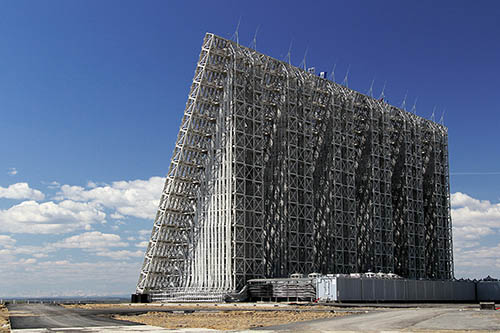Russia continues to invest resources in the construction of a unified network of naval structures on its Arctic territories capable of hosting advanced warships and submarines. Despite efforts, the strength of the Northern War Fleet is still not sufficient to guarantee national security. A strong contingent of fighter aircraft would also need to be deployed in the area to intercept and destroy incoming sub-launched missiles as they approach the Russian border. A high-precision missile attack against Russia, in fact, would only be effective if carried by launchers deployed in the Arctic Region. Missiles launched from other regions would be capable of destroying marginal targets, due to their limited flight range. The Kremlin has already announced its intention to re-open at least seven airports on the continental part of the Arctic Circle, which have been taken out of service in the 1993.
Finally, the new strategic military command in the Arctic, dubbed the "Unified Strategic Command of the Northern Fleet", is in full swing.
The Arctic territory is considered rich in untapped oil and gas reserves. The Region has always been at the center of disputes between the United States, Russia, Canada, Norway and Denmark. In December of the 2013, Russia began deploying aerospace defense units in the Arctic Region and started building an early warning radar in the far north of the country. In the Arctic there are already electronic warfare units while work on the construction of the radar network continues unabated at the town of Vortuka, north of the polar circle. Russia plans to complete the Arctic radar detection network within the 2018.
 Four class "Voronezh" radar stations are already active. Two class "Voronezh" model "DM" radars, six thousand kilometers of discovery with the ability to simultaneously trace 500 targets, are fully active in the territory of Krasnodar and in the Leningrad region. Radar stations in the Kaliningrad and Irkutsk regions, after the testing phase, are considered operational. Voronezh radars can be quickly redistributed and require a reduced crew compared to the previous generation. Russia will put into service seven "Voronezh" class radars in the next two years. The new radars will replace the obsolete "Dnepr" and "Daryal" class systems.
Four class "Voronezh" radar stations are already active. Two class "Voronezh" model "DM" radars, six thousand kilometers of discovery with the ability to simultaneously trace 500 targets, are fully active in the territory of Krasnodar and in the Leningrad region. Radar stations in the Kaliningrad and Irkutsk regions, after the testing phase, are considered operational. Voronezh radars can be quickly redistributed and require a reduced crew compared to the previous generation. Russia will put into service seven "Voronezh" class radars in the next two years. The new radars will replace the obsolete "Dnepr" and "Daryal" class systems.
Moscow's design also includes a fully automated air defense radar capable of detecting any type of threat, including cruise missiles and unmanned aircraft, at a maximum distance of 3 000 kilometers.
The automated early warning radar, dubbed "Container", will cover most of Europe. From 18 months, the system is being tested at the city of Kovylkino. It could become fully operational within the next few weeks.
Specifications, number of radar stations and location are covered by military secrecy.
(photo: MoD Russian Federation)












